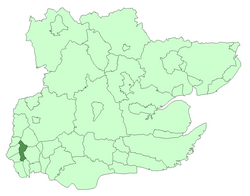| Wanstead and Woodford | |
|---|---|
 Wanstead and Woodford within Essex in 1961 | |
| Area | |
| • 1934 | 3,842 acres (15.5 km2) |
| • 1965 | 3,864 acres (15.6 km2) |
| Population | |
| • 1939 | 44,057 |
| • 1961 | 61,416 |
| History | |
| • Created | 1934 |
| • Abolished | 1965 |
| • Succeeded by | London Borough of Redbridge |
| Status | Urban district (until 1937) Municipal borough (after 1937) |
 Coat of Arms [1] | |
Wanstead and Woodford was a local government district from 1934 to 1965 in southwest Essex, England. A merger of two former urban districts, it was suburban to London and part of the Metropolitan Police District.
